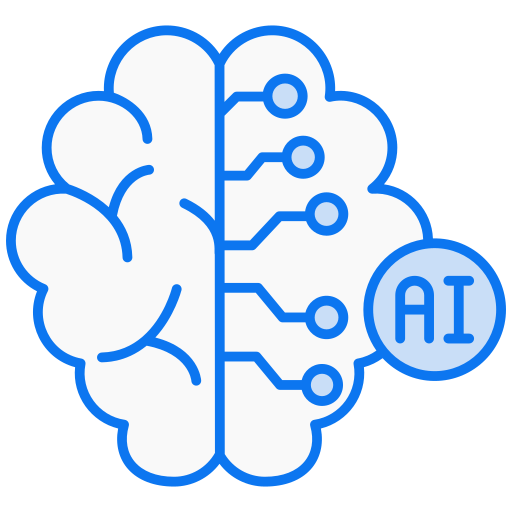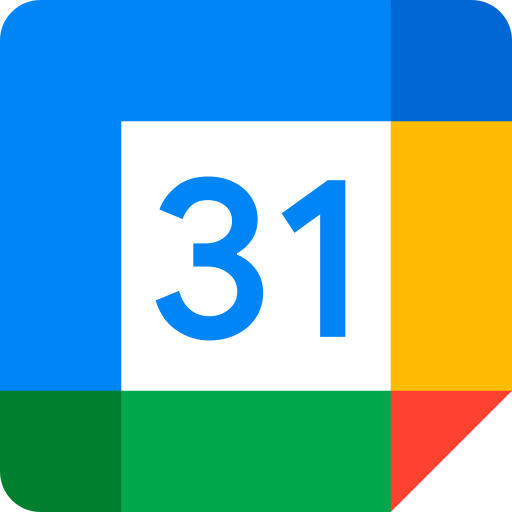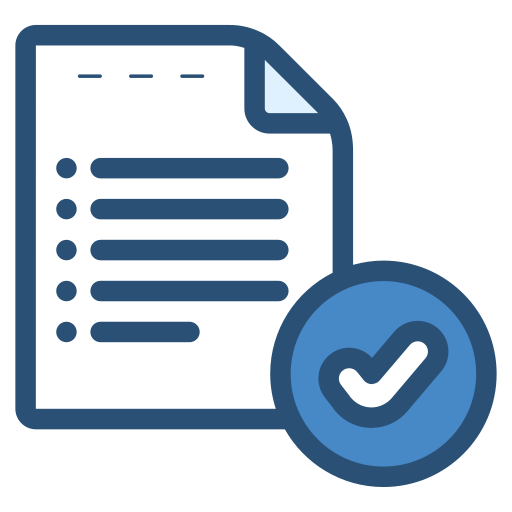Accelerating Data Migrations: Automating 1000s of SQL-to-PySpark Conversions
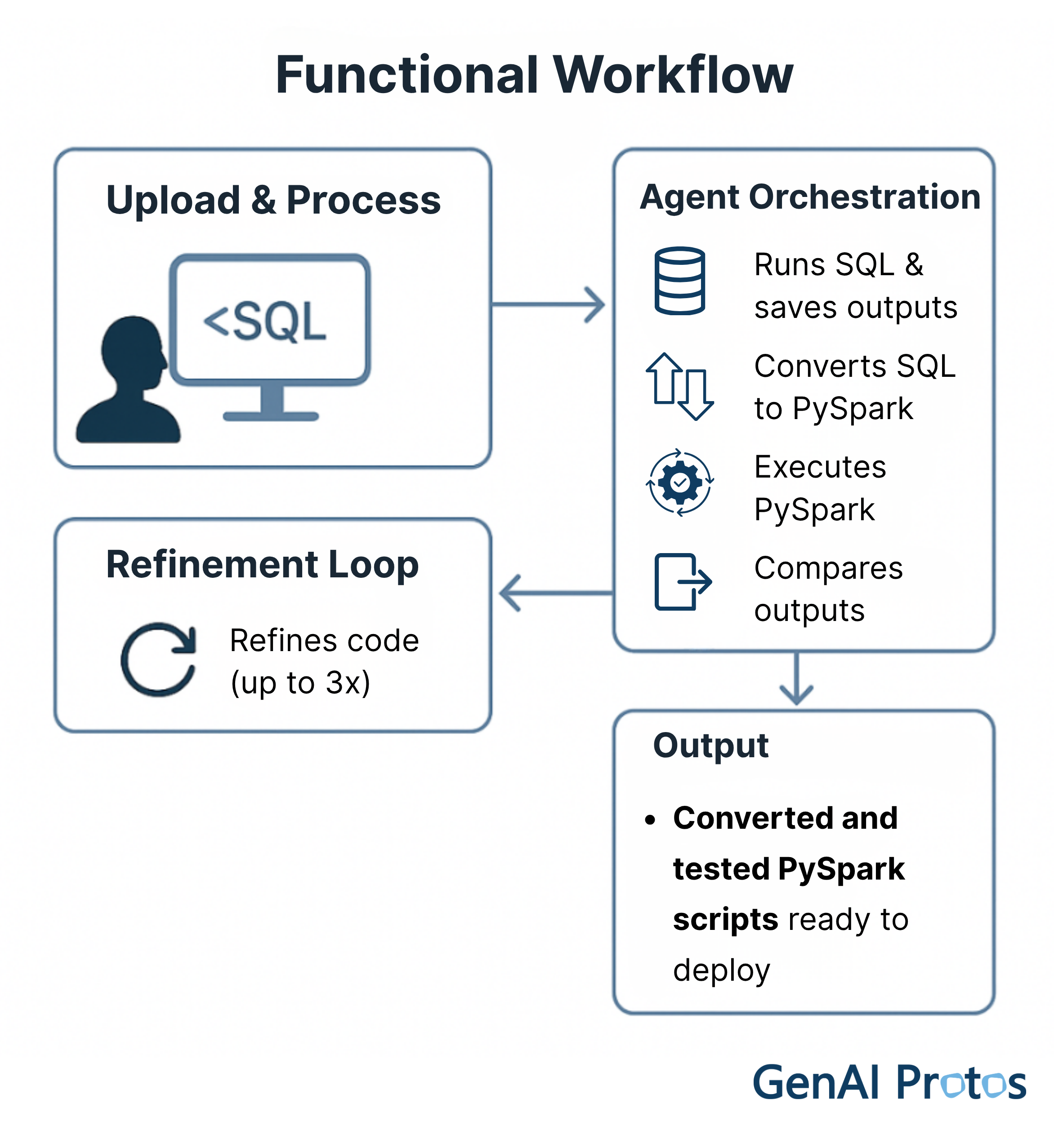
Modernizing enterprise data platforms is never easy. For many organizations, the biggest hurdle lies in migrating legacy SQL scripts into modern platforms like Spark and Databricks. With thousands of scripts powering ETL pipelines, manual rewrites can take months, drain engineering capacity, and still result in mismatches.
In this blog, we share how we built an agentic application powered by LLMs that converts thousands of SQL scripts into PySpark DataFrame code with inbuilt validation, accuracy scoring, and actionable feedback for engineers.
The Challenge: SQL Migrations at Scale
Enterprises across industries rely on legacy SQL for decades of ETL jobs. But as they shift to Spark, Databricks, and other modern ecosystems, they face three common issues:
- Scale – Rewriting thousands of scripts manually is painfully slow.
- Accuracy – Small mismatches between SQL and PySpark outputs can break downstream systems.
- Cost – Skilled engineers spend time on repetitive work instead of innovation.
The client needed an automated, reliable, and scalable solution that could
- Convert SQL to PySpark at scale
- Validate outputs between SQL and PySpark
- Provide confidence scoring and actionable next steps
The Solution: An Agentic Application with Inbuilt Validation
We developed a single intelligent conversion agent equipped with a modular set of tools. This agent orchestrates the end-to-end workflow from reading SQL scripts, generating PySpark, validating outputs, refining mismatches, and streaming results back to the engineer.
Simplified User Interface for the Developers:
Bulk upload, Explain code, Validation scripts.

Code complexity, Agentic conversion with Confidence score and Completion percentage.

Built-in Code validation by comparing outputs from original and converted scripts.
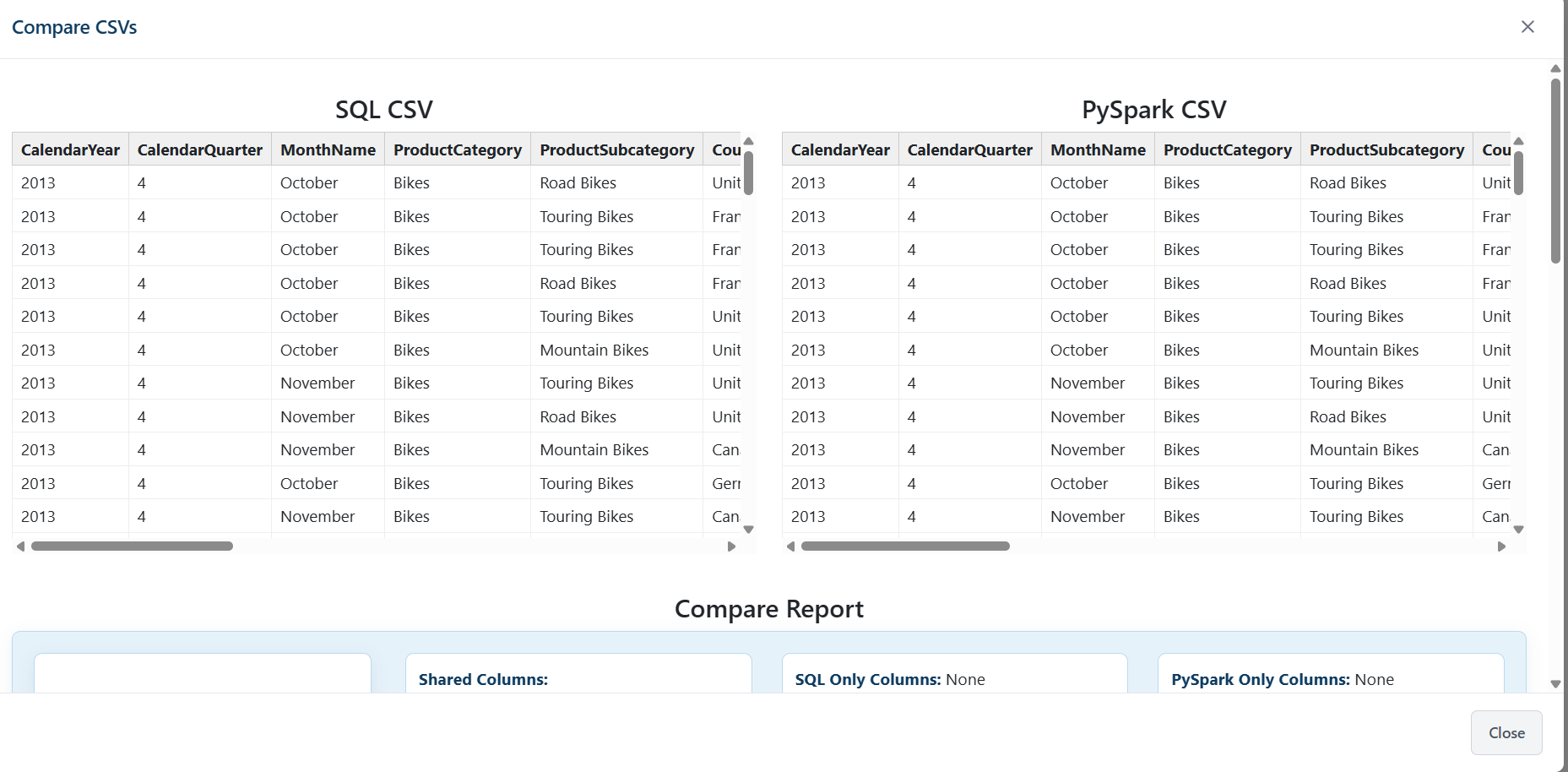
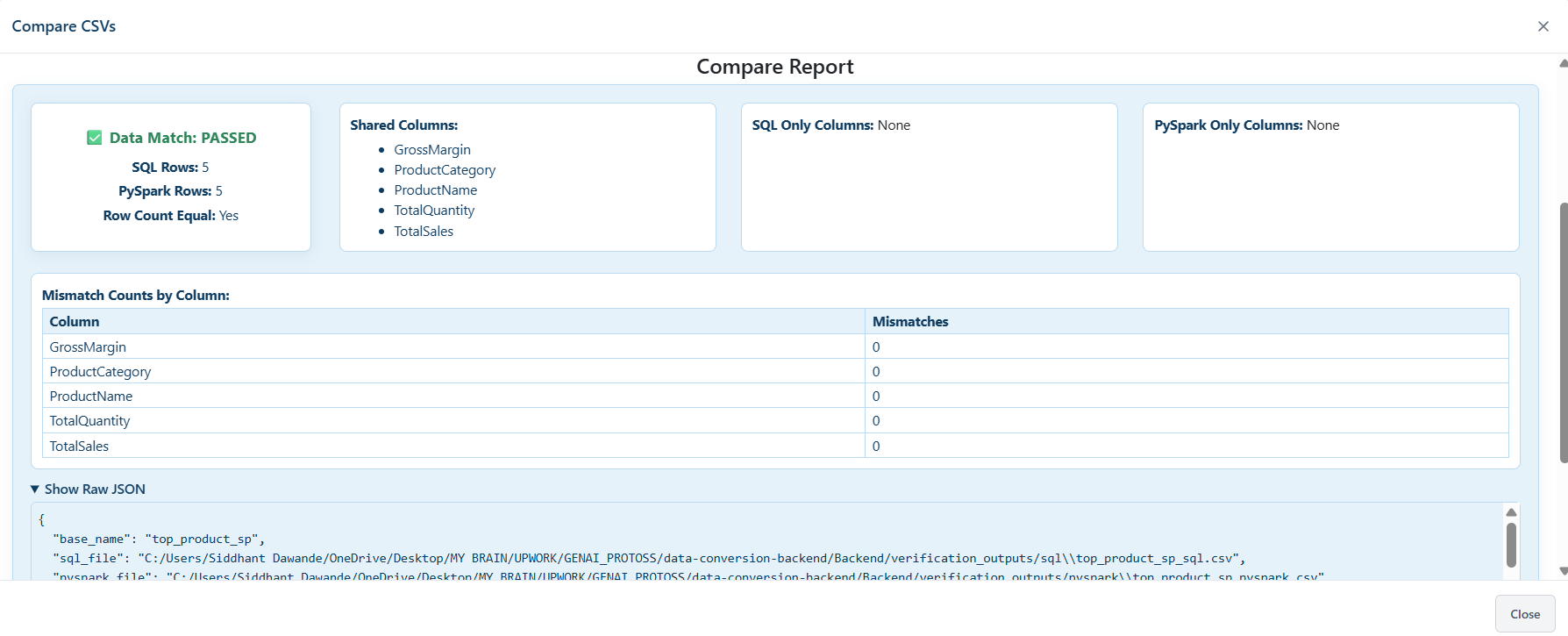
Functional Workflow
1. Upload & Process
Engineers upload SQL scripts through an API endpoint.
2. Agent Orchestration
The agent:
- Runs the original SQL and saves outputs.
- Converts SQL into PySpark DataFrame code.
- Executes the generated PySpark.
- Compares outputs for validation.
- Runs the original SQL and saves outputs.
3. Refinement Loop
If outputs don’t match, the agent automatically retries and refines the code up to three times.
4. Results Streaming
The agent returns PySpark code, a confidence score, complexity rating, completion percentage, and prioritized action items.
Key Capabilities
Our agentic application does more than just translate code. It brings explainability, accuracy, and extensibility to the process:
- Automated SQL-to-PySpark Translation – With iterative self-correction.
- Inbuilt Validation – Ensures functional parity across outputs.
- Explain Code – Generates human-readable explanations of PySpark transformations.
- Complexity Scoring – Rates each script from 1–10, helping teams prioritize effort.
- Confidence Index – Quantifies accuracy of each conversion.
- Actionable Guidance – Suggests fixes, improvements, and code snippets.
- Extensible Toolset – Easily enhanced for other migration targets.
Supported Platform Migrations
This application isn’t just for SQL-to-PySpark. It was designed as a modular migration foundation that can be extended to support multiple modernization paths enterprises face globally.
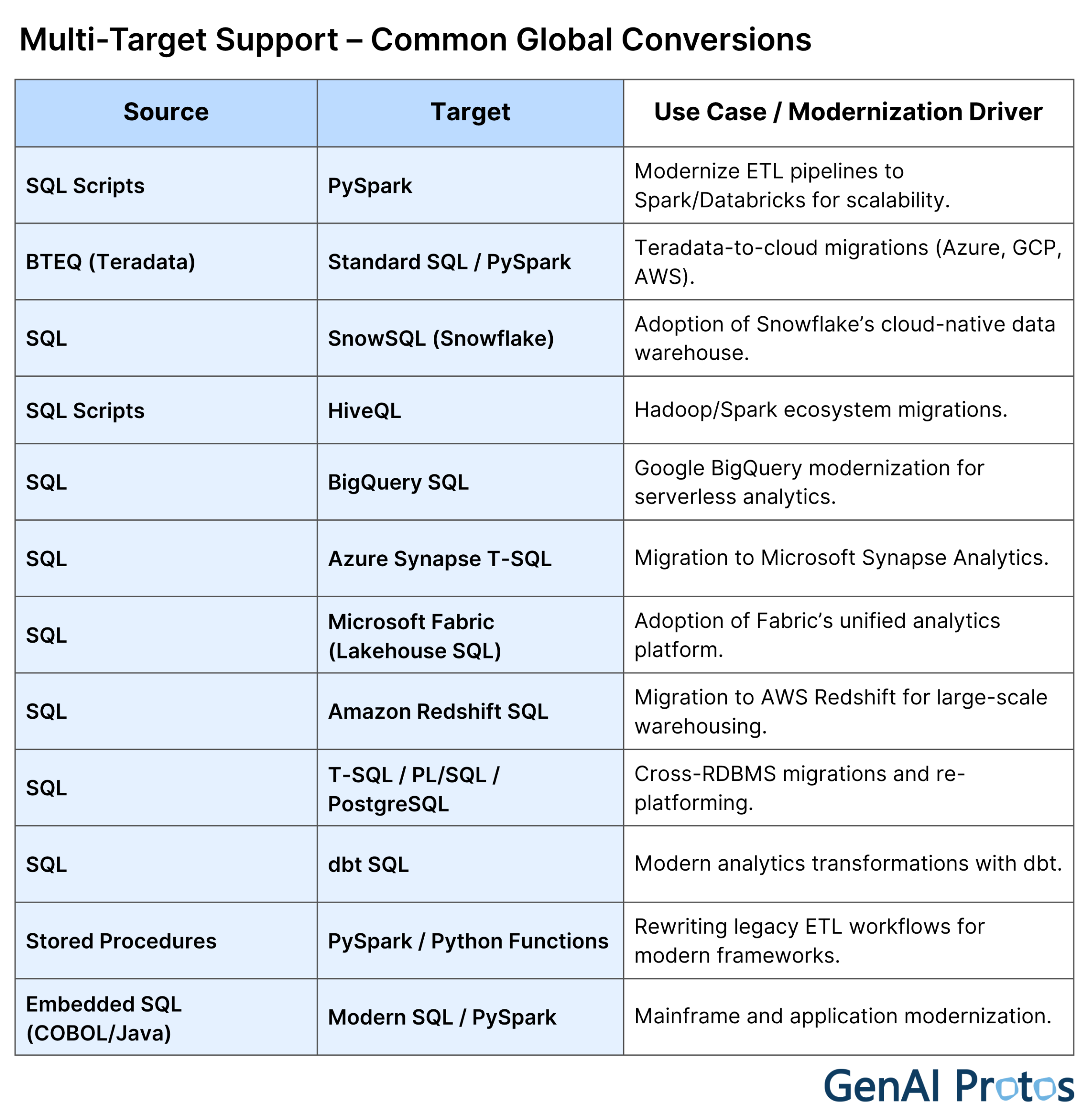
This extensibility ensures the tool can be applied not just once – but across multiple modernization programs in an enterprise, maximizing ROI.
Business Impact
The results for our client were immediate and measurable:
- 70% Faster Migration – Thousands of scripts processed in a fraction of the time.
- Reduced Errors – Built-in validation ensured parity before production deployment.
- Efficient Resource Use – Engineers focused on high-value, complex cases instead of repetitive rewrites.
- Transparency & Trust – Confidence scores and explain-code features built trust in automated outputs.
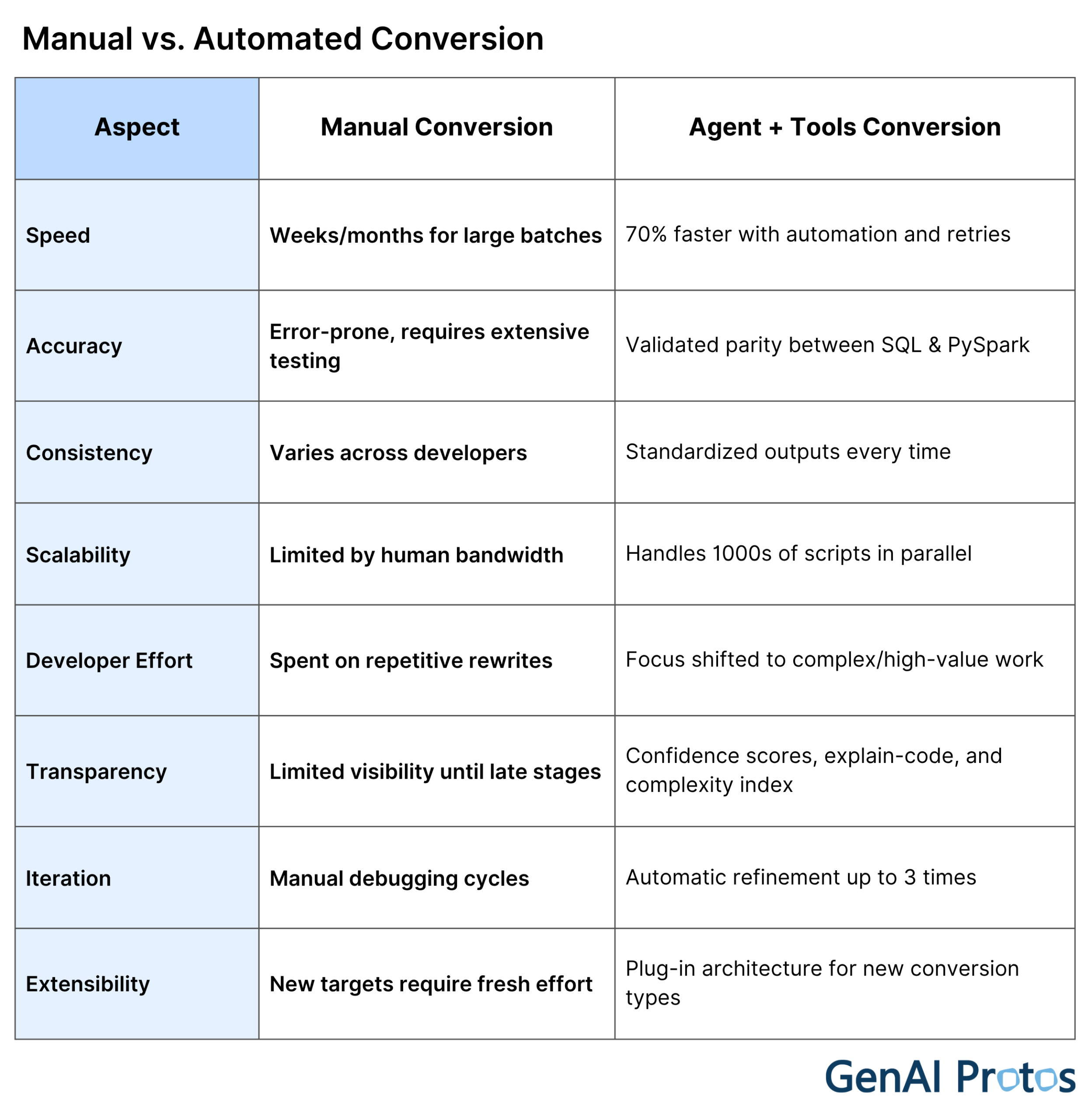
Technical Foundation
- API Layer: FastAPI endpoint /convert_with_agent_stream.
- Agent Framework: Built with Agno, powered by LLMs (OpenRouter/OpenAI).
- Integrated Tools:
- run_sql_script – Executes SQL queries.
- run_pyspark_job_from_string – Executes generated PySpark code.
- compare_verification_csvs – Validates parity between outputs.
- Execution Runtime: PySpark with automated session management.
- Output Format: JSON with code, confidence, complexity, completion %, and action items.
- Extensibility: Supports future conversions like Teradata BTEQ, HiveQL, SnowSQL, Synapse, Redshift, and more.
Final Thoughts
Data modernization doesn’t have to be a bottleneck. By leveraging agentic AI applications with modular tools, enterprises can accelerate migrations, reduce risk, and maximize engineering efficiency.
Our SQL-to-PySpark Conversion Application is just one example of how AI-driven automation can tackle large-scale migration challenges — paving the way for faster adoption of modern cloud platforms like Snowflake, Databricks, Fabric, Synapse, Redshift, and BigQuery.
Ready to Accelerate Your Data Migration?
Whether you’re migrating thousands of SQL scripts to PySpark or modernizing entire data estates across Snowflake, BigQuery, Redshift, Synapse, or Fabric, our agentic applications and accelerators can get you there faster.
Learn more at:
www.3XDataEngineering.com – Data engineering accelerators to cut migration time and cost.
www.GenAIProtos.com – Generative AI solutions, prototypes, and R&D services for enterprises.
